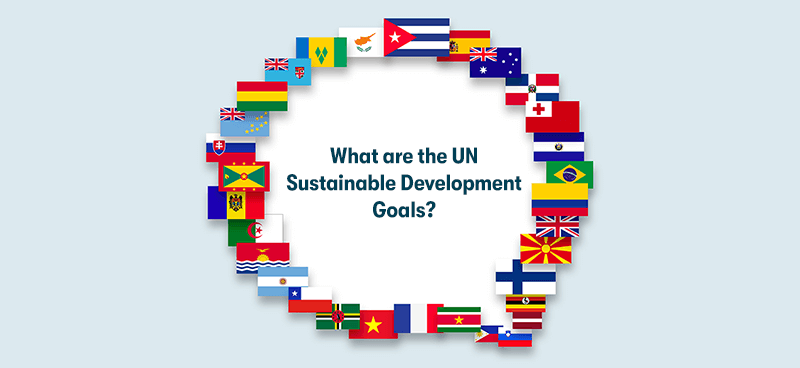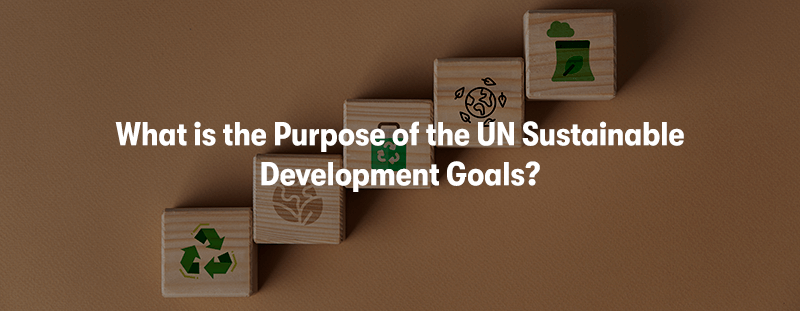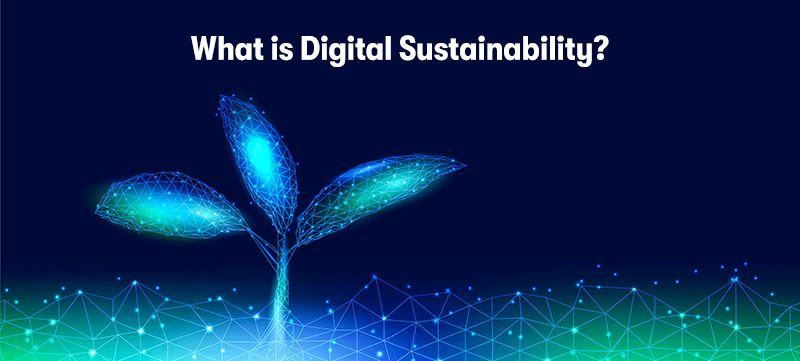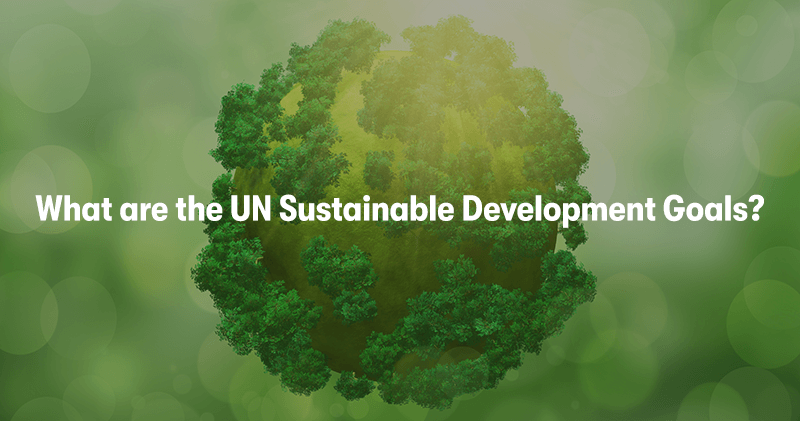What are the UN Sustainable Development Goals?
Welcome to our in-depth exploration of a pivotal global initiative, the United Nations Sustainable Development Goals (SDGs). In 2015, the United Nations embarked on an ambitious journey, setting forth a universal agenda to address some of the most pressing challenges facing today's world.
These goals, adopted by all UN Member States, represent a bold commitment to eradicate poverty, protect the environment, and ensure prosperity and peace for all by 2030. From combating hunger to promoting gender equality and tackling climate change, the SDGs are a clarion call for collective action.
Join us as we delve into each of these goals, understanding their significance and the paths they pave towards a more sustainable and equitable future for everyone.
What are the UN Sustainable Development Goals?

The United Nations Sustainable Development Goals are a universal call to action to end poverty, protect the planet, and ensure that everyone enjoys peace and prosperity. These 17 Goals were adopted by all UN Member States in 2015 as part of the 2030 Agenda for Sustainable Development. The SDGs recognise that ending poverty must go hand-in-hand with strategies that build economic growth and address various social needs, including education, health, social protection, and job opportunities while tackling climate change and environmental protection. Here is a brief overview of each:
- No Poverty: End poverty in all its forms everywhere.
- Zero Hunger: End hunger, achieve food security and improved nutrition, and promote sustainable agriculture.
- Good Health and Well-being: Ensure healthy lives and promote well-being for all ages.
- Quality Education: Ensure inclusive and equitable quality education and promote lifelong learning opportunities for all.
- Gender Equality: Achieve gender equality and empower all women and girls.
- Clean Water and Sanitation: Ensure availability and sustainable management of water and sanitation for all.
- Affordable and Clean Energy: Ensure access to affordable, reliable, sustainable, and modern energy for all.
- Decent Work and Economic Growth: Promote sustained, inclusive and sustainable economic growth, full and productive employment, and decent work for all.
- Industry, Innovation, and Infrastructure: Build resilient infrastructure, promote inclusive and sustainable industrialisation, and foster innovation.
- Reduced Inequality: Reduce inequality within and among countries.
- Sustainable Cities and Communities: Make cities and human settlements inclusive, safe, resilient, and sustainable.
- Responsible Consumption and Production: Ensure sustainable consumption and production patterns.
- Climate Action: Take urgent action to combat climate change and its impacts.
- Life Below Water: Conserve and sustainably use the oceans, seas, and marine resources for sustainable development.
- Life on Land: Protect, restore, and promote sustainable use of terrestrial ecosystems, sustainably manage forests, combat desertification, and halt and reverse land degradation and biodiversity loss.
- Peace and Justice Strong Institutions: Promote peaceful and inclusive societies for sustainable development, provide access to justice for all, and build effective, accountable, and inclusive institutions at all levels.
- Partnerships for the Goals: Strengthen the means of implementation and revitalise the global partnership for sustainable development.
Each goal has specific targets to be achieved over the next 15 years. To reach these targets, everyone needs to do their part: governments, the private sector, civil society, and individuals.
How Many UN Sustainable Development Goals are There?
There are 17 United Nations Sustainable Development Goals (SDGs). These goals were established as a universal call to action to end poverty, protect the planet, and ensure that all people enjoy peace and prosperity by 2030. Each goal has specific targets and indicators to guide and measure progress.
When Were The UN Sustainable Development Goals Created?
The United Nations Sustainable Development Goals (SDGs) were officially adopted on September 25, 2015, during the United Nations Summit on Sustainable Development. This was a historic event, as it marked the adoption of a comprehensive agenda for global development for the next 15 years, from 2016 to 2030.
The SDGs succeeded the Millennium Development Goals (MDGs), which guided global development efforts from 2000 to 2015. The broader and more ambitious SDGs were developed through an inclusive process involving Member States of the United Nations, along with global civil society and other stakeholders, aiming to address a wide range of global challenges.
What is the Purpose of the UN Sustainable Development Goals?

The United Nations Sustainable Development Goals (SDGs) serve several key purposes:
Comprehensive Framework for Global Development
The SDGs provide a holistic framework for addressing a wide range of global challenges. Unlike their predecessors, the Millennium Development Goals (MDGs), the SDGs cover a broader spectrum of issues, including economic, social, and environmental aspects of sustainable development.
Guiding Global and National Policies
The goals are intended to guide the policies and actions of UN member states over a 15-year period, encouraging countries to frame their agendas and political policies in a way that fosters sustainable development.
Ending Poverty and Hunger
A primary focus of the SDGs is to eradicate extreme poverty and hunger, recognising these as fundamental to achieving sustainable development.
Promoting Health, Education, and Equality
The goals emphasise the importance of good health, quality education, gender equality, and reducing inequalities, which are essential components for improving the quality of life globally.
Environmental Protection and Climate Action
They recognise the critical need to protect the environment and combat climate change, emphasising sustainable practices and the responsible use of resources to preserve the planet for future generations.
Encouraging Peaceful, Just Societies
The SDGs highlight the importance of fostering peaceful, inclusive societies with strong institutions, recognising that sustainable development cannot be achieved without peace and security.
Creating Partnerships
The goals underscore the need for collaborative partnerships between governments, the private sector, and civil society to mobilise the resources, knowledge, and expertise required to achieve sustainable development.
In summary, the SDGs aim to create a global blueprint for dignity, peace, and prosperity for people and the planet, now and into the future. They represent a universal call to action to protect the planet and ensure that all people enjoy peace and prosperity by 2030.
What is Digital Sustainability?

Digital sustainability refers to the practice of designing, implementing, and using digital technologies in a way that supports and enhances the long-term health and viability of both society and the environment. It encompasses several key aspects:
Energy Efficiency and Resource Conservation
This involves developing and using energy-efficient digital technologies that reduce resource consumption. It includes optimising data centre operations, utilising renewable energy sources, and designing software and hardware that require less power.
Sustainable Business Practices
Companies and organisations are increasingly incorporating sustainability into their digital strategies. This means reducing the environmental impact of their digital operations and using digital tools to improve overall sustainability in supply chain management, resource allocation, and waste reduction.
Inclusion and Accessibility
Digital sustainability also involves making technology accessible and usable for all, ensuring that digital products and services do not widen the digital divide but rather help bridge it. This includes focusing on universal design principles, affordability, and ease of use.
Longevity and Maintenance
It involves designing digital systems and devices with longer lifespans, making them easier to repair, upgrade, and recycle, thereby reducing electronic waste and the environmental footprint associated with the production and disposal of digital technologies.
Ethical Data Use
Sustainable digital practices also encompass ethical considerations in the use of data, including privacy, security, and the responsible use of AI and big data analytics, ensuring that these technologies are used for the benefit of society without causing harm.
Promoting Sustainability Through Technology
Digital tools and technologies can be powerful enablers for broader sustainability goals. This includes using data analytics for environmental monitoring, developing apps that promote sustainable habits, or leveraging IoT for efficient resource management.
Education and Awareness
Spreading knowledge and awareness about the importance of sustainability in the digital realm and encouraging best practices among users, developers, and stakeholders.
Digital sustainability is an evolving field, reflecting the growing recognition of the need to integrate environmental and social considerations into the rapidly expanding digital world.
Where Can You Learn More About Digital Sustainability?
At Purple Griffon, we offer an ITIL® 4 Specialist Sustainability in Digital & IT (SDIT) training course. This course will help you to:
- Understand how to use the ITIL guiding principles to deliver value by creating sustainable digitally enabled products and services.
- Effectively address VUCA challenges through sustainable strategies, procurement, products and practices.
- Obtain a practical grounding in the key principles of sustainability.
- Conduct a complete cost-benefit analysis identifying potential risks and opportunities using best practice guidance.
Final Notes on the UN Sustainable Development Goals
In conclusion, our exploration of the United Nations Sustainable Development Goals (SDGs) reveals their vital role as a comprehensive blueprint for global progress. Adopted in 2015, these 17 goals ambitiously target key areas like poverty, hunger, health, education, gender equality, and environmental sustainability, aiming to create a more equitable and sustainable world by 2030.
Moreover, we delved into the concept of digital sustainability, an increasingly important aspect as our world becomes more technologically driven. This concept underscores the need to integrate sustainable practices into the digital realm, focusing on energy efficiency, ethical data use, and ensuring technology's accessibility and longevity.
As we continue to navigate the complexities of global development and technological advancement, intertwining these goals and concepts will be crucial for a sustainable future.


